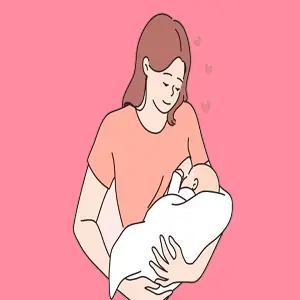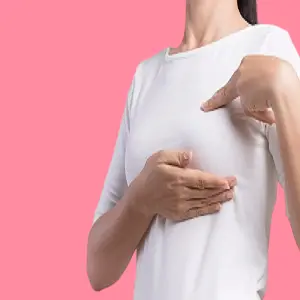Mastitis is a common health problem among women, especially during breastfeeding. Knowing the causes and following appropriate prevention methods helps protect the breasts and maintain the health of both mother and child.
What is Mastitis?
Mastitis is swelling or redness in the breasts resulting from a bacterial infection or blocked milk ducts, often accompanied by severe pain and fever.
Causes of Mastitis
Several factors can lead to mastitis, including:
- Blocked milk ducts during breastfeeding.
- Bacterial infections transmitted through the nipple cracks.
- Irregular breastfeeding or incomplete emptying of the breast.
- Mechanical pressure on the breasts from tight clothing.
- Weakened maternal immunity or certain chronic conditions.
Symptoms of Mastitis
Symptoms of mastitis include:
- Redness and swelling in an area of the breast.
- Severe pain or burning during breastfeeding.
- Fever and fatigue.
- Chills and nausea in some cases.
Methods for Preventing Mastitis

There are several ways to prevent mastitis, including:
- Regular breastfeeding: Continuously emptying the breasts to prevent blocked ducts.
- Proper positioning during breastfeeding: To reduce pressure on the milk ducts.
- Maintain good hygiene: Wash your hands and gently clean your nipples before breastfeeding.
- Wear appropriate clothing: Avoid pressure on the breasts with tight clothing.
- Treat any cracks or sores in the nipple: To reduce the risk of infection.
- Avoid excessive pressure on the breasts: During sleep or daily activities.
- Strengthen your immune system: Through a healthy diet and adequate fluid intake.
Medications for Mastitis
Treatment for mastitis depends on its severity and cause. Doctors often prescribe the following medications:
- Antibiotics: To treat bacterial infection and prevent the spread of infection.
- Pain relievers: Such as paracetamol or ibuprofen to relieve pain and fever.
- Topical antiseptic creams: Used in cases of cracked nipples to prevent infection.
- Anti-inflammatories: In some cases, to reduce swelling and redness.
Important note: These medications should be used under a doctor's supervision, especially during breastfeeding, to avoid any negative effects on the mother or baby.
When should you see a doctor?

A doctor should be consulted immediately if any of the following symptoms occur:
- Persistent pain or increased swelling.
- A severe fever.
- The appearance of an abscess or pus in the breast.
- Symptoms do not improve after following preventive and home treatment measures.
How long does it take for mastitis to heal?
In mild cases, it often improves within 1–2 weeks with regular breastfeeding and appropriate treatment, while severe cases may require longer-term antibiotics.
Can mastitis be treated at home?
Symptoms can be relieved at home by applying a warm compress to the breast, continuing breastfeeding or pumping, and taking safe painkillers after consulting a doctor. However, severe mastitis requires medical follow-up.
Summary of the causes of mastitis and ways to prevent it
Mastitis is a common condition, but it can be prevented with regular breastfeeding, proper positioning, and personal hygiene.
Adhering to these steps will maintain the mother's health and prevent painful complications.